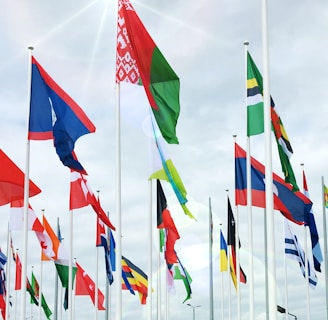Global Markets in Turmoil: The Escalating Trade War’s Impact on Investment Banking


The global financial landscape is experiencing heightened volatility as escalating trade tensions between the United States and the European Union (EU) disrupt markets. President Donald Trump’s recent imposition of tariffs on steel and aluminum imports has prompted retaliatory measures from the EU, leading to a climate of economic uncertainty. These developments have significantly impacted investment banking activities, with major institutions like Morgan Stanley revising their outlooks for 2025.
Trade Tensions and Market Volatility
The introduction of U.S. tariffs on steel and aluminum imports has been met with swift retaliation from the EU, exacerbating fears of a full-scale trade war. President Trump’s threats to impose a 200% tariff on EU wine, champagne, and alcohol, unless the EU removes its 50% tariff on American whiskey, have further strained relations. This tit-for-tat escalation has contributed to declines in both European and U.S. stock markets, with indices such as the S&P 500, Dow Jones, and Nasdaq all experiencing downturns.
Investment Banking’s Cautious Stance
Amid this backdrop, investment banking activities have slowed. Morgan Stanley analysts have revised their outlook for a rebound in 2025, citing ongoing market volatility and economic uncertainty driven by fluctuating tariff discussions. Initially optimistic about a prosperous year in capital markets following President Trump’s election, expectations have been tempered due to unpredictable trade policies causing clients to adopt a cautious approach, delaying investment activities. Consequently, investment banking activity has been lower than anticipated in the first quarter of 2025. Morgan Stanley now predicts subdued capital market activity in the first half of the year, with a potential uptick in the third quarter, assuming market volatility decreases and tariff issues become more apparent.
Central Banks at a Crossroads
The current economic turbulence places central banks in a precarious position. While the European Central Bank, China, and Japan have responded with rate cuts and quantitative easing, the U.S. Federal Reserve and Australia’s Reserve Bank remain conservative. With recent economic indicators showing slowing growth and soft inflation, the focus is on whether the Fed will adjust its tight monetary policy to stave off a potential recession. The S&P 500 has fallen by 9%, and U.S. Treasury Bonds have seen an 8% increase, indicating market fears and rising interest in safe assets. The Fed’s decision to maintain rates at 4.5% contrasts sharply with the ECB’s aggressive rate cuts to 2.65%. The critical question is whether the Fed will pivot towards rate cuts and quantitative easing to stimulate the economy or maintain its current stance, risking a deeper recession.
Conclusion
The escalating trade tensions and resulting market volatility underscore the interconnectedness of global economies. Investment banks, central banks, and policymakers must navigate this complex environment carefully to mitigate risks and promote stability. As the situation evolves, stakeholders should remain vigilant and adaptable to the rapidly changing economic landscape.


